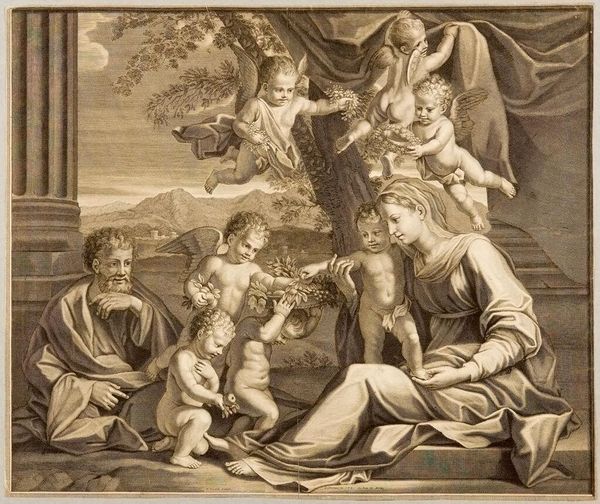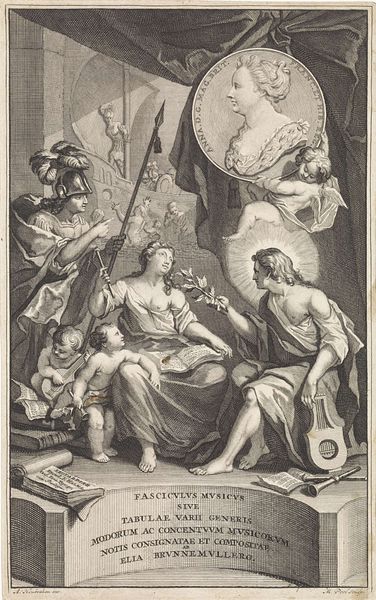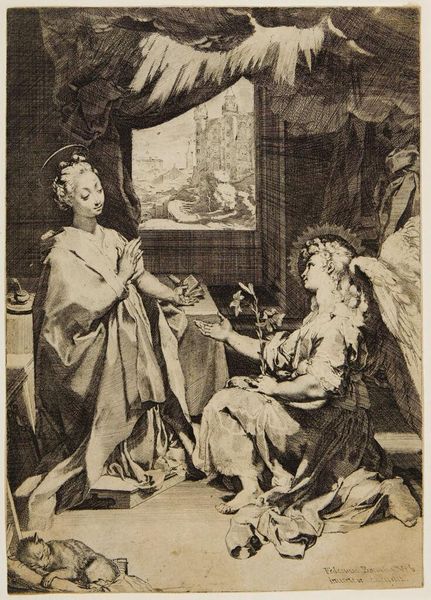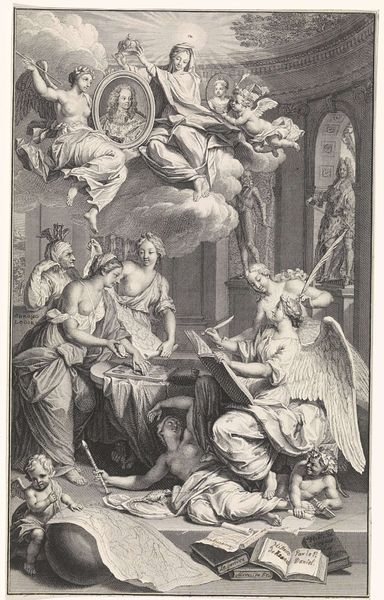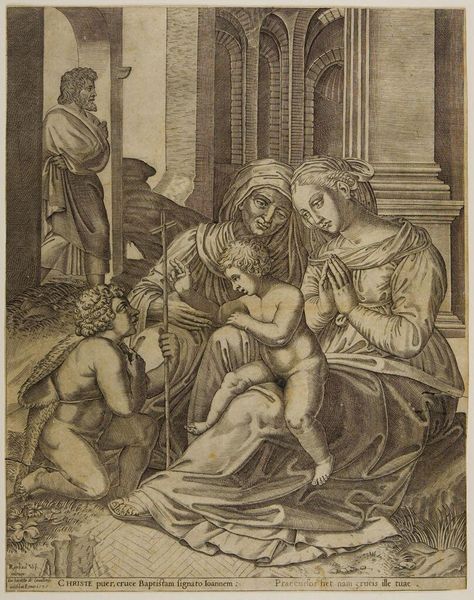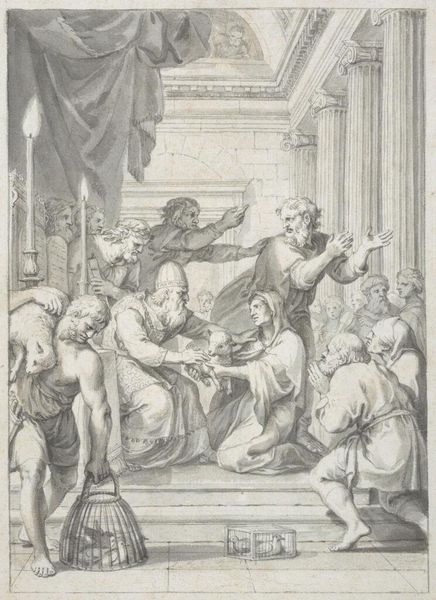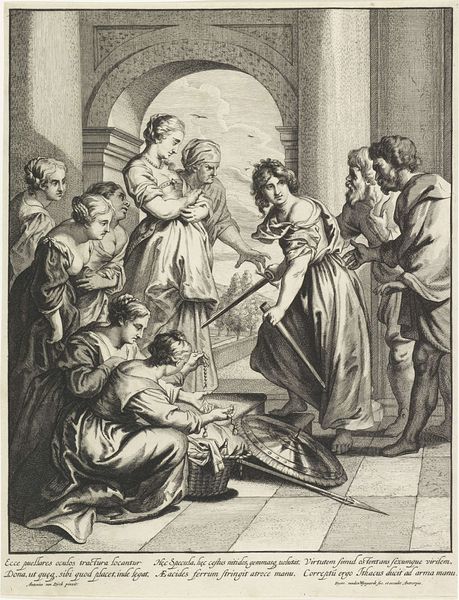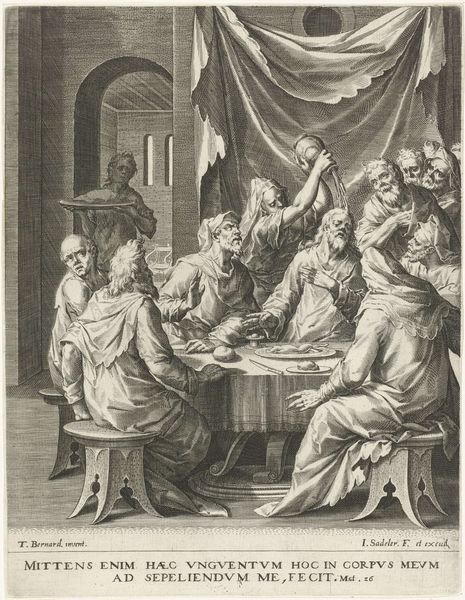
Copyright: Public domain
Editor: Here we have Giovanni Domenico Tiepolo’s “The Mandarin’s Walk, from the Chinese Room in the Foresteria,” painted in 1757 using oil paint. It has such a theatrical air, these figures in fanciful interpretations of Chinese dress. What historical lens can we use to better understand this scene? Curator: Tiepolo’s work, part of a decorative cycle in a guest house, reflects a specific moment of European fascination with the ‘Orient.’ It’s critical to understand that this isn't a neutral observation. It’s filtered through the lens of European colonialism and trade, which profoundly shaped the cultural exchange – or, more accurately, the cultural appropriation – we see depicted here. What do you notice about the figures' clothing and the overall setting? Editor: It seems almost cartoonish, an exaggerated, romanticized vision of China. Is that informed by Venetian politics, or its place as a cultural centre? Curator: Precisely. Venice, as a major trading power, had direct interactions with the East. But the depiction isn't about accuracy; it’s about creating a luxurious fantasy for the patrons. Think about who would have commissioned and viewed this work. It provided a safe, controlled, and ultimately self-serving image of the exotic “other,” reinforcing existing power dynamics. This image plays with chinoiserie style, highlighting the social value placed on possessing and displaying “exotic” knowledge and artifacts. How do you think its original setting affected its interpretation? Editor: The Foresteria being a guest house… I suppose it served as entertainment, almost like a conversation piece, or evidence of the owner’s worldly sophistication. I’m also interested to learn that it really reflects a self-serving narrative. Curator: Exactly. Understanding the social context – the patronage, the trade relations, and the prevailing attitudes – allows us to see beyond the surface aesthetics and recognize the political implications of such imagery. Editor: That’s so interesting. It makes you think about how art, even decorative pieces like this, are never truly separate from power and politics. Thanks, that’s a perspective I’ll definitely take with me.
Comments
No comments
Be the first to comment and join the conversation on the ultimate creative platform.
